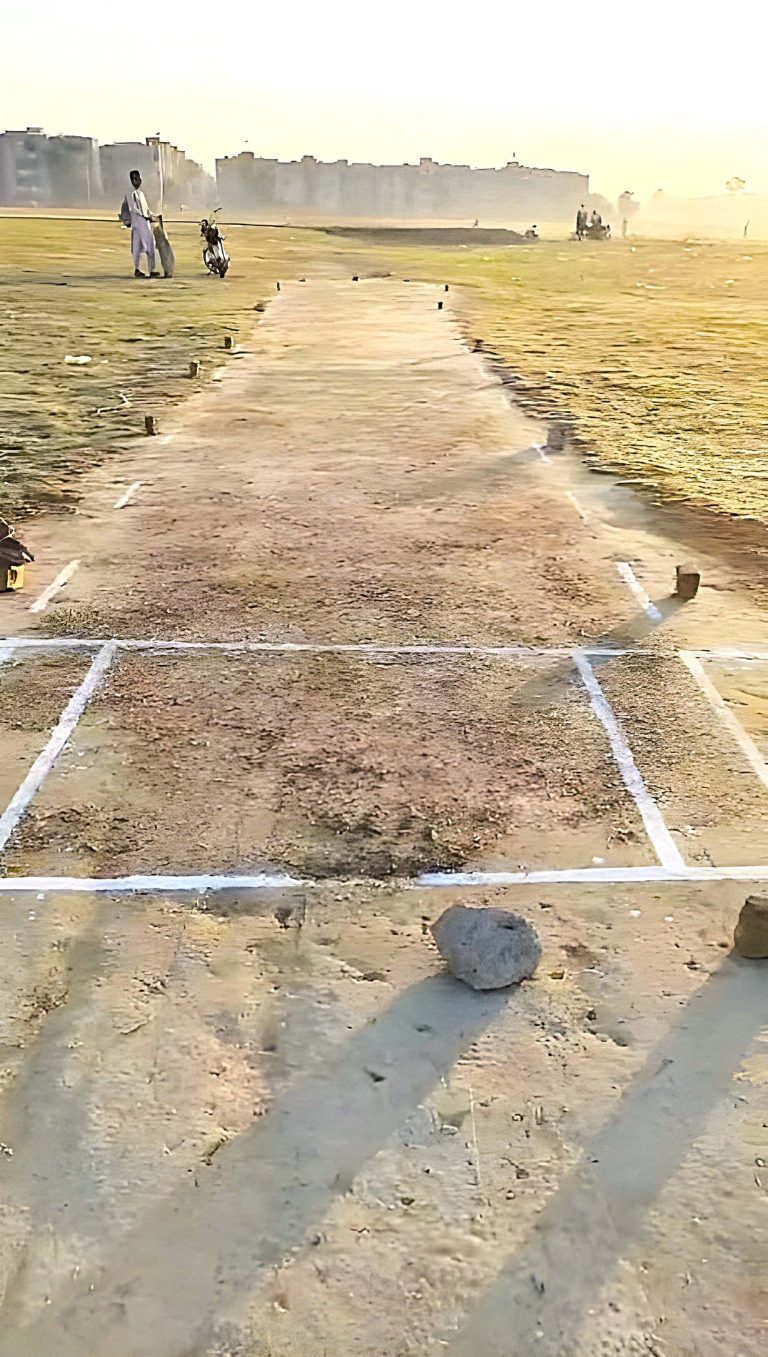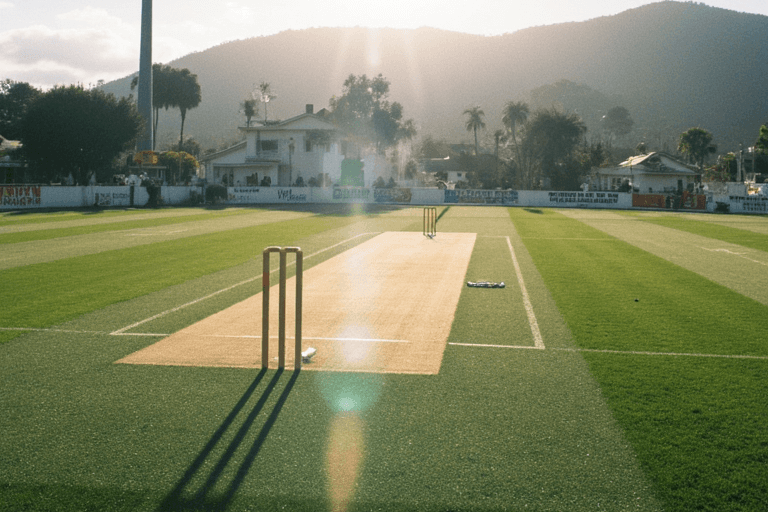Tape ball cricket ground size 2025
Review to tape ball cricket ground size
Recent trends in tape ball cricket have come to prominence; owing to their speedy nature and casual field requirements. They can be conveniently played almost anywhere and virtually require no equipment. Notably, they have gained a global following. However, for the sport to remain competitive, it is advised to have a basic outline for the field size and dimensions. In this article, we describe the setup for a tape ball cricket match, and how the dimensions can be altered to play in different environments.

Key Factors Affecting Tape Ball Cricket Ground Size
While there is no fixed rule for the exact dimensions of a tape ball cricket ground, several factors impact the minería debil definition size of the ground:
- Space Availability: When deciding the size of the ground one of the most important factors to think about is the space available on the field. For instance, if you have too much open space, like in a park or a big backyard, then you can increase the boundaries but if you’re located on a narrow street or and slightly cramped up then your options are limited.
- Number of Players: It will depend upon the players per each team how many there would need to be the level of space required. A typical tape ball cricket game can have 6 to 11 players per team, and if you’re playing with a larger group, you’ll need a more significant field to avoid congestion and make the game more enjoyable.
- Type of Game: The format of the game also influences the size of the ground. The ground can be smaller if you’re playing a quick, informal game. A larger field is required to accommodate the proper gameplay dynamics for a more structured match with boundaries and wickets.
- Type of Shots and Bowlers: The field size should also allow for a mix of batting and bowling strategies. For instance, fast bowlers need a longer run-up, while spinners need to control their deliveries and get enough bounce. Similarly, batters should have enough space to hit boundaries, and the field should be large enough to accommodate all fielders effectively.
Standard Tape Ball Cricket Ground Dimensions
While there is no strict standard for the size of a tape ball cricket ground, most informal games are played with the following dimensions:
- Ground Dimensions: As mentioned earlier the ideal size of the tape-ball cricket field in terms of length can be from 60 to 80 meters. This will enable bowlers to build up speed and batters to play a variety of shots without feeling too closed in.
- Width of the Ground: The width of the ground is typically about 40 to 60 meters. A wider field allows the batters to play shots square of the wicket and on the offside and leg side, providing enough area to clear the boundary.
- Boundaries: Boundaries are often marked with natural elements like walls, fences, or even trees, depending on the available space. A boundary distance of about 25 to 35 meters from the pitch is ideal. This gives the batsman a reasonable chance of hitting a six while preventing excessive lofted shots from going too far. If you’re playing in a smaller area like a street or a compact backyard, the boundary can be as small as 15 meters.
- Pitch Length: The pitch length for tape-ball cricket is 22 yards (20.12 meters), similar to a traditional cricket pitch. However, due to the informal nature of tape-ball cricket, players often adjust the length of the pitch to suit their space and preferences. The pitch can be shortened to 15 to 18 yards in tight spaces to fit the available area.
Tape Ball Cricket Ground Setup for Small Spaces
Finding ample space to play can take in many urban places, time, and effort. However, that doesn’t mean you can’t enjoy tape ball cricket. If you’re playing in a smaller space, such as a street or a narrow backyard, here are a few tips to set up a fun and playable ground:
- Shorten the Boundaries: In tight spaces, the boundary size may be reduced to 15 to 20 meters to keep the game engaging. This encourages more aggressive batting and gives the players a reasonable chance to hit sixes. You can mark the boundary by using walls, trees, or even lamp posts.
- Adapt the Pitch: Depending on the available space, you can reduce the pitch length to about 15 to 18 yards in smaller spaces. Batters might get more thrilled if the pitch is shortened as bowlers are left with less time to optimize their pace.
- Adjust Fielding Positions: With less space available, you must adapt your fielding positions accordingly. You may need more room for a full 11-player setup, so limiting the number of fielders or creating smaller fielding areas (such as restricting fielders to one side) can help keep the game fair and exciting.
- Use Barriers to Control Ball Movement: To prevent the ball from frequently going out of bounds, consider using makeshift barriers like fences, walls, or even ropes to contain the action within the playing area. This will help the game stay competitive by limiting the number of sixes hit over the boundary.
Tape Ball Cricket Ground Setup for Larger Spaces
In the case of parks or open grounds, the traditional approach need not be strictly followed, as such places offer considerable room for flexibility. Here are some suggestions on how to utilize a larger field to one’s advantage:
- Maintain Standard Dimensions: In larger spaces, stick to the ideal ground dimensions of 60 to 80 meters long and 40 to 60 meters wide. This ensures enough space for both fast and spin bowlers to generate movement and for batters to play a variety of shots.
- Standard Boundary Setup: Maintain a boundary of 25 to 35 meters for a fair game. With a larger area, you can set up more fielders and provide ample space for batters to clear the boundary while requiring skill to hit sixes.
- Wickets and Field Markings: You can mark the pitch and field with more precise markings, such as stumps, boundary ropes, and fielding circles. This enhances the experience of tape-ball cricket, making it feel more like professional cricket.
- Adjust for the Number of Players; More significant grounds allow for entire team setups with 11 players per side. Nevertheless, the game can be very competitive when there are more players on the field which permits you to adjust the quantity of fielders in accordance to your own discretion.
Frequently Asked Questions
- What is the ideal ground size for tape ball cricket?
- The ideal size for a tape ball cricket ground is approximately 60 to 80 meters long and 40 to 60 meters wide, with a boundary around 25 to 35 meters.
- Can I play tape ball cricket in a small space like a street?
- Yes, tapeball cricket can be played in smaller spaces. Adjust the pitch length to about 15 to 18 yards, shorten the boundaries to 15 to 20 meters, and limit the number of players to suit the available space.
- What is the recommended pitch length for tape ball cricket?
- The recommended pitch length is 22 yards (20.12 meters), but it can be shortened to 15 to 18 yards in smaller spaces.
- How can I make tape ball cricket more fun in a limited space?
- Reduce the boundaries, adjust fielding positions, and use makeshift barriers to control the ball’s movement in small spaces to make the game more enjoyable.
- How do I measure the boundary for tape ball cricket?
- In larger spaces, the boundary should be approximately 25 to 35 meters from the pitch. To increase excitement in smaller spaces, boundaries can be shortened to 15 meters.
Conclusion
Tape ball cricket is an engaging sport that can be played in both confined spaces like small yards and large ovals. One of the main components for establishing a good game is structuring the ground size accordingly ton the amount of space available. Grasping the appropriate tape ball cricket ground dimension and playing in a narrow street or a large yard makes the game fair, enjoyable, and competitive. So take your tape ball, mark the ground, and have fun playing the tape ball cricket!

